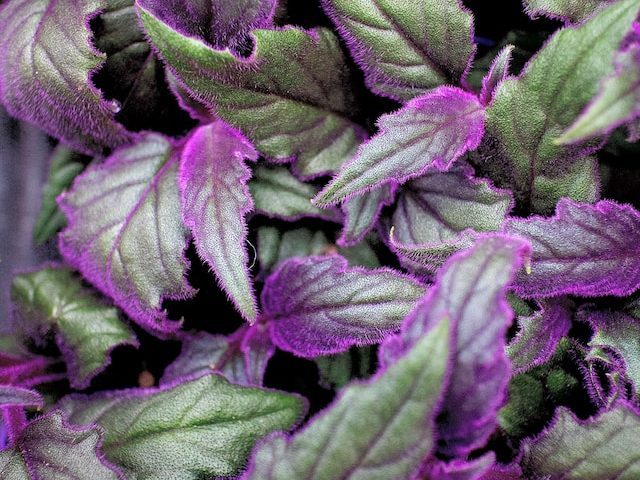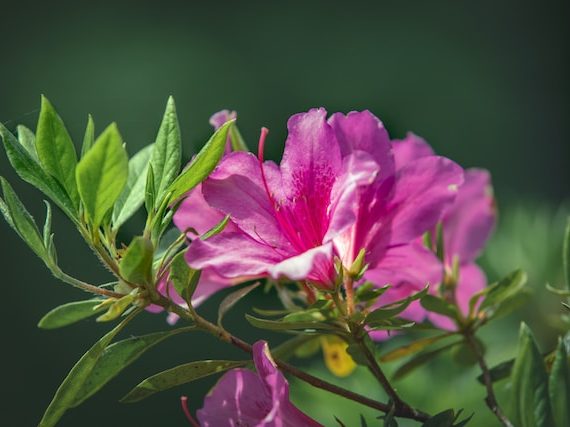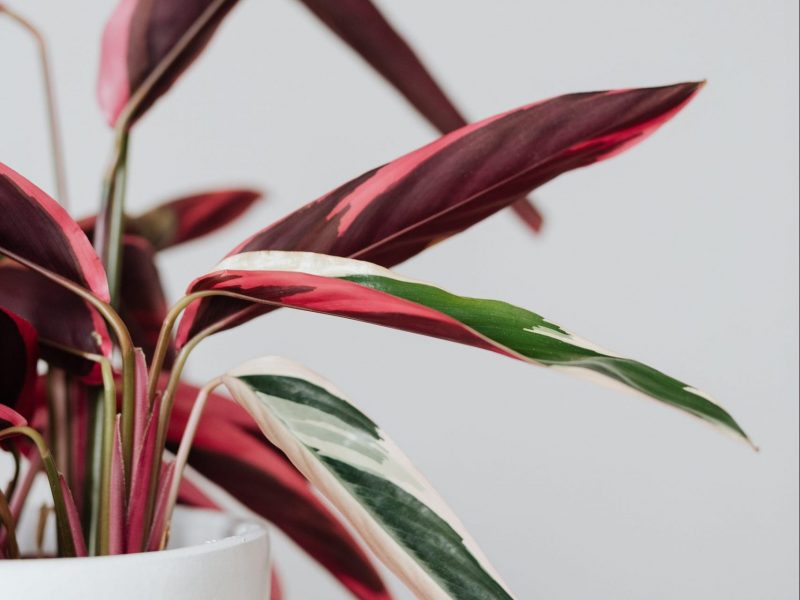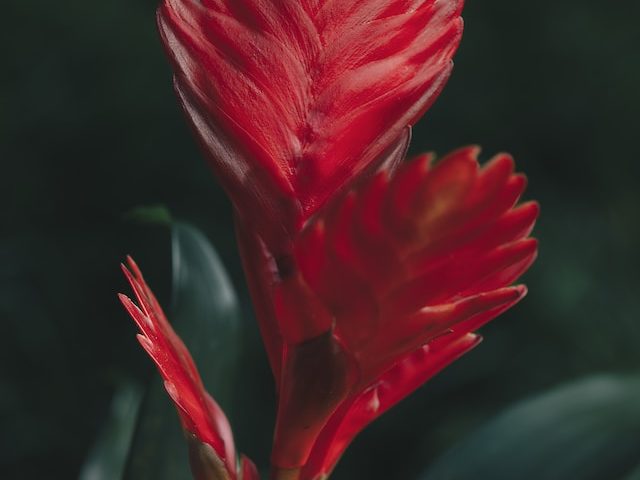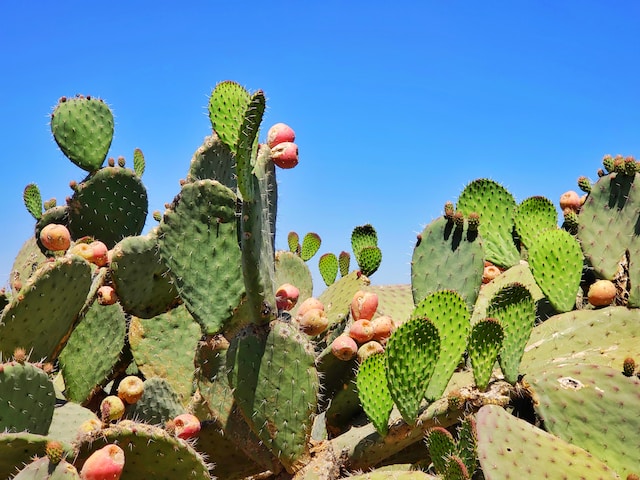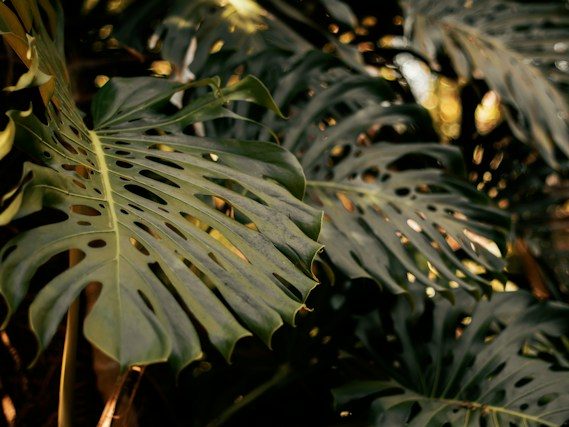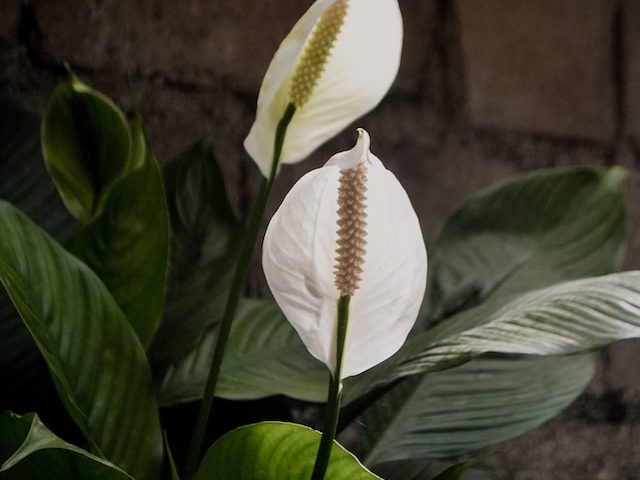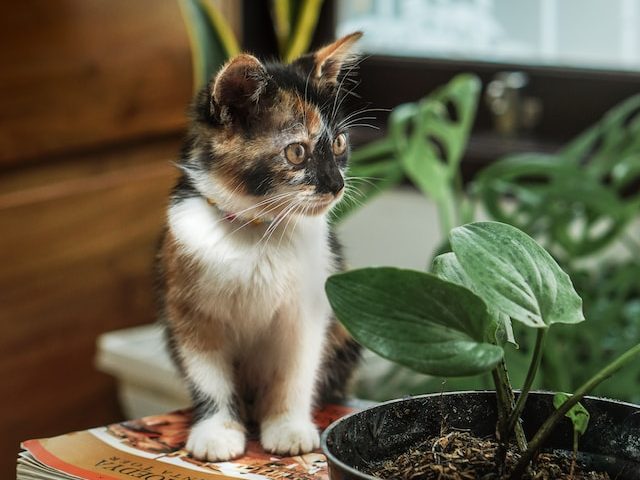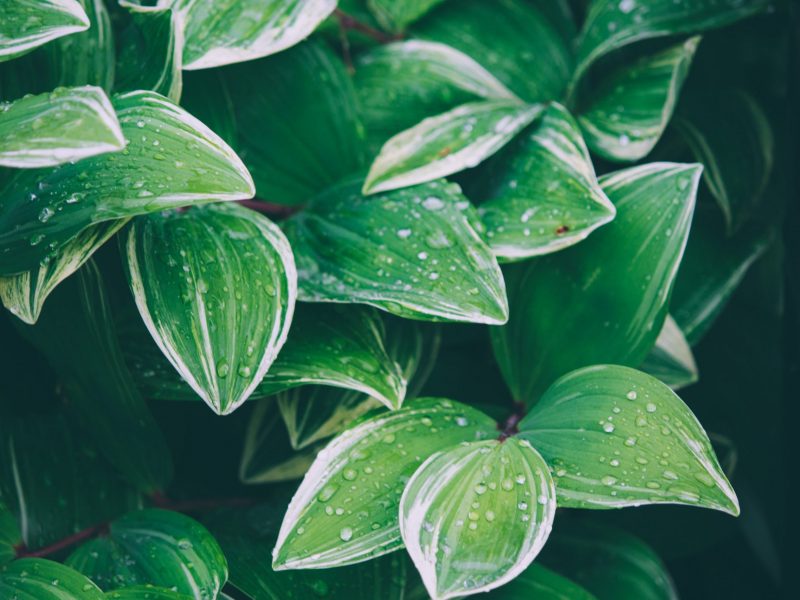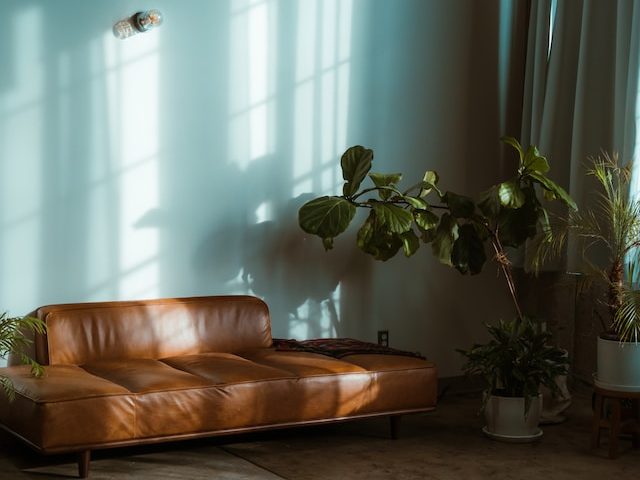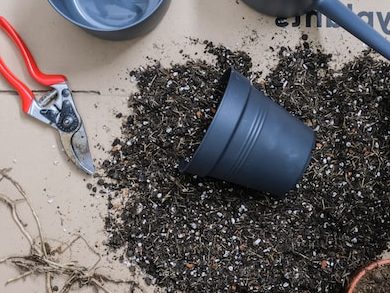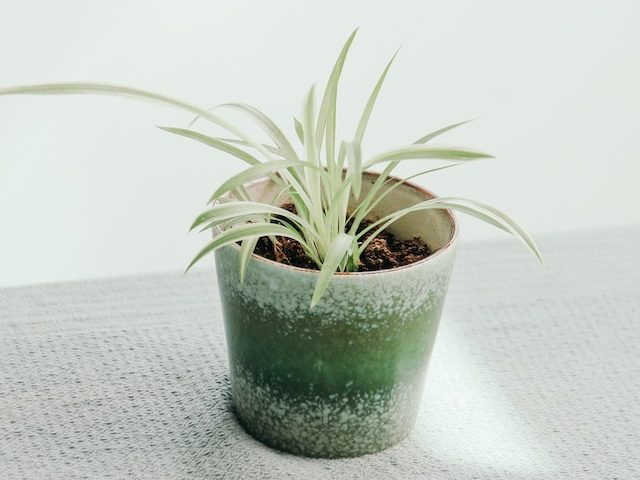Spider Plant Leaves
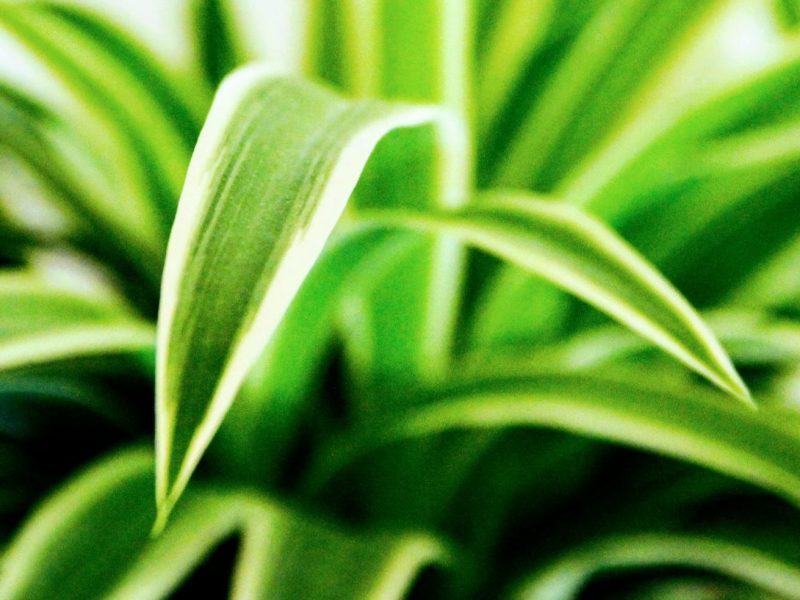
Introduction to Spider Plants
Native to tropical and southern Africa, Spider Plants (scientifically known as Chlorophytum comosum) are resilient, adaptable and easy to care for! They are a really great beginner houseplant if you don’t have any experience caring for indoor plants (they were actually one of our first back in the day).
Characteristics of Spider Plants
Spider Plants are often associated with a cascade of green-and-white variegated leaves. They are also loved because of their tiny plantlets or ‘spiderettes’ that dangle from the mother plant, much like a spider on its web. During spring and summer, these appealing houseplants can also boast small delicate white flowers.
Benefits of Spider Plants
Spider Plants are also celebrated for their air-purifying properties. According to NASA’s Clean Air Study, they are capable of filtering out formaldehyde, xylene, and toluene from the air, contributing to a healthier indoor environment.
Understanding the Different Types of Spider Plants
Spider Plants come in an array of delightful variations and while they all share common traits, each type has unique characteristics.
Variegatum
The Variegatum is arguably the most popular type of Spider Plant. It’s characterised by its striking green leaves with white edges. This variety is particularly beloved for its resilience and easy care requirements.
Vittatum
Next, we have the Vittatum. This Spider Plant variation flips the variegation around with its vibrant green leaves adorned with a central white stripe. It’s a fantastic option for those seeking a dash of contrast in their foliage.
Bonnie
The Bonnie offers a curly twist on the classic Spider Plant aesthetic. Its leaves curl and twist around which is a great way to add a bit of fun to your plant collection.
Hawaiian Spider Plant
Finally, the Hawaiian Spider Plant. It distinguishes itself with its variegated leaves that have a cream colour. This variety can add a lovely softness and warmth.
The Ideal Light Level for Spider Plants
Spider plants thrive best in bright, indirect light conditions. Direct sunlight, particularly the harsh midday rays can cause the leaves to lose a lot of their color and in extreme cases can burn and scorch the leaves. This can leave irreversible brown patches across your plant. In contrast, too little light can stunt the plant’s growth and inhibit its characteristic variegation but they can still survive in lower light areas if needed.
Artificial Light for Spider Plants
Spider plants are also tolerant of artificial lighting conditions, making them ideal for office spaces or rooms without sufficient natural light. They respond well to fluorescent lighting, which can supplement or even replace natural light. A few hours under these lights each day can keep your spider plant healthy and vibrant.
Watering Spider Plants: How Often and How Much?
There isn’t really a one-fits-all way of watering Spider Plants as the water quantity and frequency can depend on a variety of factors such as the plant’s size, the pot’s size, and the surrounding environment.
Start with a basic rule of thumb: water your Spider Plant thoroughly once a week during the growing season (spring and summer). In the dormant season (autumn and winter), reduce the frequency to once every 2-3 weeks.
Here are some additional watering tips:
- Water in the morning: This gives the plant ample time to absorb the water and any excess to evaporate before the cooler night temperatures set in (and the risk of leaf and root rot increases)
- Use room-temperature water: Cold water can shock the plant, while hot water can damage the roots.
- Avoid wetting the leaves: Wet leaves can lead to leaf rot or other fungal diseases.
Fertilizing Spider Plants: Tips and Tricks
Spider plants are loved for their hardiness, but to achieve a vibrant, lush appearance, a little fertilisation added to your care routine can go a really long way.
The Perfect Fertilizer:
A balanced houseplant fertilizer, typically a 10-10-10 or 20-20-20 NPK solution is generally recommended for spider plants. This implies it contains equal parts of nitrogen, phosphorus, and potassium, which are essential nutrients for plant growth.
Frequency of Fertilization:
During the growing season (spring and summer), you should fertilize the plant once a month. In the dormant phase (autumn and winter), reduce the frequency to once every 2 months.
Tips for Fertilizing Spider Plants:
- Water before fertilizing: Always drench the soil with water before applying fertilizer. This prevents the roots from getting burned by the concentrated nutrients.
- Follow instructions: Always adhere to the recommended dosage on the fertilizer packaging. Over-fertilization can do more harm than good.
- Observe your plant: If the leaves turn brown or yellow despite regular fertilization, it may indicate an issue with water or light rather than a lack of nutrients.
Remember, over-fertilizing is a common mistake. Spider plants prefer to be under-fertilized rather than over-fertilized so we often use less than the recommended amount.
The Ideal Temperature for Spider Plants
Spider Plants are resilient but prefer cooler environments. They thrive best when the temperature is between 13-27°C (55-80°F).
Low Temperatures: While Spider Plants can withstand low cool temperatures, anything below 7°C (45°F) may result in leaf and root damage.
High Temperatures: On the other side of the spectrum, Spider Plants may wilt and dry out if exposed to temperatures above 32°C (90°F). Ensure your plant isn’t exposed to direct sunlight during peak summer months to avoid potential heat damage.
Indoor Temperature Regulation for Spider Plants
- Use a Thermostat: This will help maintain a consistent temperature within your home.
- Avoid Hot or Cold Drafts: Keep your plant away from open windows, air conditioners, heaters, or other sources of sudden temperature changes.
- Consider Room Location: Rooms on the south side of your home usually get more sunlight, hence they are warmer. North-facing rooms, on the other hand, tend to be cooler. Choose the location based on your local climate and season.
Humidity Requirements for your Spider Plant
While Spider Plants can tolerate a wide range of humidity levels, they truly flourish when the humidity is between 40% and 60%. This level mimics their natural native habitat and allows them to maintain optimal leaf health.
Methods to Increase Humidity
- Misting: A daily spritz of water on the leaves can significantly boost the humidity level. Just remember, Spider Plants don’t like to sit in water, so a light misting will suffice.
- Pebble Trays: If your home is particularly dry, you might consider making a pebble tray. Simply place your Spider Plant in a tray filled with water and pebbles. Over the course of the day, the water will evaporate, creating a humid microclimate around your Spider Plant.
- Grouping Plants: Placing your Spider Plant near other houseplants can also increase humidity. Plants naturally release moisture, creating a more humid environment.
However, be careful not to overdo it. While Spider Plants appreciate humidity, too much can lead to root rot or fungal diseases. Always keep an eye for signs of distress, such as yellowing leaves or wilting and adapt your care and the environment accordingly.
Controlling Excess Humidity
If your home is too humid for your Spider Plant then you can use a dehumidifier or an air conditioner to control excess humidity. It’s also beneficial to ensure your Spider Plant’s soil has proper drainage and that the plant is not overwatered. Remember, Spider Plants prefer their soil to dry out between waterings.
Choosing the right Soil for your Spider Plant
Soil selection is a very important part of the care routine but is so often forgotten. The right soil provides the perfect blend of aeration, drainage, and nutrition.
Components of the Ideal Soil Mix
- Peat Moss or Coconut Coir: These constituents add a lightweight structure to the soil, enhancing its water-holding capacity and aeration.
- Perlite or Sand: These inorganic components ensure proper drainage, preventing waterlogging and root rot.
- Compost: Providing a natural source of nutrients, compost promotes the lush growth of your Spider Plant.
A good rule of thumb is to use a ratio of 1:1:1 for these components. This creates a balanced soil mix that caters to the unique needs of the Spider Plant.
Commercial Soil Mixes
If you don’t want to prepare your own soil mix from scratch, commercial soil mixes are an excellent alternative. A high-quality, well-draining potting mix designed for houseplants will suffice.
Soil pH
The Spider Plant prefers slightly acidic to neutral pH levels, between 6.0 and 7.2. Use a soil pH tester to ensure the soil is within this range. Adjusting the pH, if needed, can be done by adding lime to raise the pH or sulphur to lower it.
Choosing the best Pot for your Spider Plants
Choosing the right pot for your Spider Plant is a crucial step towards ensuring your plant’s long-term health. The pot plays a significant role in the overall well-being of the plant, affecting everything from root health to water management. Below are a few factors to consider when choosing the right pot:
Pot Size
Spider Plants have a robust root system that can quickly outgrow a small pot. As a general rule, a pot with a diameter of 6-8 inches is a good starting point for young plants. For mature plants, you might want to go for a 10-12 inch pot to give the roots plenty of room to grow.
Pot Material
Pots can be made of various materials, each with its unique pros and cons. Ceramic or terracotta pots are great for Spider Plants as they allow the soil to breathe and help prevent overwatering. However, they can be heavy and may break if dropped. Plastic pots, on the other hand, are lightweight and durable, but they retain water more, which can lead to root rot if not carefully managed.
Drainage is Key
Regardless of size or material, every good pot should have adequate drainage holes. This allows excess water to escape, preventing the soil from becoming waterlogged and keeping your Spider Plant’s roots healthy and happy.
Visual Appeal
Last but not least, don’t forget to consider the aesthetic aspect! Your pot should not only be functional but also fit in with your home’s decor and personal style.
Spider Plant Growth Rate
With the right care and attention, Spider Plants can grow quite quickly, especially when it comes to growing new spiderettes in spring and summer. A healthy plant can typically achieve a growth rate of 6-12 inches per year. These growth spurts are usually seen in the warmer seasons, specifically in spring and early summer.
Optimising Spider Plant Growth
To ensure your Spider Plant achieves its best possible growth, consider the following tips:
- Rotate your plant occasionally to ensure all sides receive equal light exposure.
- Prune any brown or yellow leaves to encourage new, healthy growth.
- Repot your plant every 1-2 years to provide fresh soil and room for roots to expand.
Pruning Spider Plants: When and How to Do It
Pruning is an essential part of Spider Plant care that ensures your plant maintains its lush, vibrant appearance. Not only does it boost the overall health of the plant, but it also prevents it from becoming overcrowded and facilitates growth.
When to Prune a Spider Plant
Pruning should be a regular part of your care routine for a Spider Plant. However, the optimal time is typically during the late winter or early spring. This is when the plant is preparing for the upcoming growth season and can benefit the most from pruning.
How to Prune a Spider Plant
Pruning a Spider Plant doesn’t require any specialised tools – a pair of sharp, clean scissors or pruning shears will do the trick. It’s important to ensure that the tools are sterilised to prevent any potential infection.
- Inspect the plant: Begin by examining your spider plant. Look for browning, yellowing, or damaged leaves or stems. These are the parts that you’ll want to remove.
- Trim the affected areas: Using your scissors or shears, cut off the unhealthy parts at the base. This enables the plant to redirect its energy to the healthy parts, promoting robust growth.
- Prune the babies: If your spider plant has “babies” or offshoots, consider pruning them as well. This can help the parent plant retain more nutrients and grow more vigorously. Spiderettes are super easy to propagate so it can be a nice way to grow new plants for free!
- Dispose of the cuttings: Discard the pruned parts properly to prevent any disease from spreading to other plants.
Propagation Techniques for Spider Plants
There are two main methods of Spider Plant propagation: division and through offsets. Both of these methods have high success rates and are also super simple.
1. Propagate through Division
The simplest method of Spider Plant propagation involves division. Essentially, this means separating the plant into smaller parts, which can each grow into a new, independent plant. Here’s how you do it:
- Firstly, remove the entire plant, including the roots, from its pot.
- Next, gently separate the plant into two or more sections. Ensure each section has a healthy chunk of roots attached.
- Finally, plant each section into a new pot filled with fresh potting mix.
2. Propagate through Offsets
Spider Plants often produce baby plants or ‘offsets’ at the ends of their long, arching stems. These offsets can be easily propagated too. The step-by-step process is as follows:
- Firstly, cut the stem just below the baby plant.
- Next, place the baby plant in a pot with fresh potting mix or suspend it in a glass of water until roots form.
- Finally, once a robust root system has developed (usually after a few weeks), plant it in soil.
Flowers on a Spider Plant
Understanding the Blooming Phase
Spider Plants can bloom at any time of the year, but they’re most likely to do so during late spring or early summer. When they bloom, they send out long, arching stems adorned with clusters of small, white flowers.
Encouraging Your Spider Plant to Flower
To increase their likelihood of producing those charming flowers, ensure an appropriate balance of light and water. Too little light can hamper blooming, while over-watering can lead to root rot. So the best way to encourage your Spider Plant to bloom is to keep it happy as a struggling plant won’t grow any flowers.
Managing the Spiderettes
Post-bloom, Spider Plants often produce ‘spiderettes’, tiny plantlets dangling from the mother plant’s stems like spiders hanging from a web. These spiderettes can be left attached to the mother plant or cut off and rooted in water or soil to grow a completely new plant.
Spider Plant Toxicity to Pets and Humans
Are Spider Plants Toxic to Humans?
Fortunately, the Spider Plant is considered non-toxic to humans. They are perfectly safe to touch and handle, even for young children, making them an excellent choice for households with curious toddlers. Ingestion might result in minor gastrointestinal upset but poses no severe health risks.
Are Spider Plants Toxic to Pets?
Good news for pet owners, the Spider Plant is generally regarded as safe for pets. The American Society for the Prevention of Cruelty to Animals (ASPCA) lists it as non-toxic to both dogs and cats. However, it’s still wise to keep an eye on your furry friends around any plant.
Note: Some pets may experience some mild digestive upset if they ingest large amounts of Spider Plant leaves.
Cleaning your Spider Plant
As a proud owner of a Spider Plant, you’ll be pleased to know that they are one of the easiest houseplants to clean. This simple task, often overlooked, can significantly improve the health and appearance of your Spider Plant.
The main reason why you should regularly clean your Spider Plant is to prevent a build up of dust that can actually reduce the amount of sunlight that is hitting the leaves. Think of the dust as a small curtain pulled across the leaf that keeps some of the sun out.
Cleaning your Spider Plant also has aesthetic reasons as it will become more vibrant in colour!
Cleaning Basics
- Start by gently dusting the leaves with a soft brush or cloth to remove any accumulated dust. This helps the plant to better absorb sunlight.
- For stubborn dirt, lightly moisten a cloth and carefully wipe each leaf. Be sure not to oversaturate the leaves as this can lead to rot.
- Remember to clean the underside of the leaves. This is where insects and dust are most likely to accumulate.
Deep Cleaning
Occasionally, your Spider Plant may benefit from a deeper clean. This is especially true if it’s been a while since the last cleaning, or if the plant has been subjected to an unusually dusty environment eg. building works.
- Fill a sink or large bowl with lukewarm water. Avoid hot or cold water as it can shock and burn the plant.
- Gently swish the plant around in the water. This will loosen and wash away any stubborn grime.
- Drain the water and gently pat the plant dry. Make sure to drain any excess water from the pot to avoid waterlogging the roots.
Common Pests and Diseases that Affect Spider Plants
Spider Plants, despite their hardiness, are not entirely immune to pests and diseases. They can occasionally fall victim to a few common houseplant pests and conditions. Let’s delve into some of the most common issues you may encounter and how to deal with them effectively.
Spider Mites
Spider mites can be a nuisance as they can cause the leaves to become discoloured and stippled. If left unchecked, the plant may lose vigour, dry out and potentially die.
Treat these pests with neem oil and an insecticide, or use a mild soapy water spray. Always isolate the infected plant to prevent the mites from spreading to your other indoor plants.
Mealybugs
Another common pest is the mealybug. These small, soft-bodied insects feed on plant sap, damaging the plant and causing yellowing or curling of the leaves. In severe cases, the plant may become distorted and stunted.
Mealybugs can be controlled by wiping the plant with an alcohol-soaked cotton swab or using an insecticidal soap. Again, isolate the infected plant to contain the infestation.
Root Rot
Root rot is a disease often caused by overwatering. The excess water creates an environment conducive to fungus, which attacks the roots. The leaves may turn yellow or brown and the plant can wilt and die if not treated promptly.
Make sure to water your spider plant properly. If you suspect root rot, repot the plant in fresh soil, cutting away any visibly damaged roots. Provide good drainage and avoid overwatering.
Troubleshooting: FAQs about Spider Plant Care
Why are my Spider Plant's leaves turning brown?
Browning leaves are often a sign of underwatering, overwatering or low humidity. Make sure your Spider plant is watered adequately and that it’s in a room with enough humidity. A pebble tray or a humidifier can help maintain optimal humidity levels.
Why are the tips of my Spider Plant's leaves turning yellow?
Yellowing leaf tips can be a sign of overwatering, inadequate light, or a nutrient deficiency. Ensure your plant is placed in a bright, indirect light setting and that you’re feeding it with a balanced, water-soluble fertiliser every month during the growing season.
Why are my Spider Plant's leaves curling?
Leaf curling is commonly caused by underwatering, or exposure to cold drafts or temperatures. Keep your Spider plant in a warm place, away from cold drafts, and water it thoroughly when the top inch of the soil is dry.
Why isn't my Spider Plant producing babies?
Spider Plants usually produce babies, or ‘spiderettes’, when they’re mature and healthy. If your plant isn’t producing any, it might not be getting enough light or it could be pot-bound. Consider repotting your plant or moving it to a brighter location. If your Spider Plant is only a year or two old, it may not be mature enough to grow spiderettes so sit tight and ensure you’re giving your plant what it needs to thrive.



